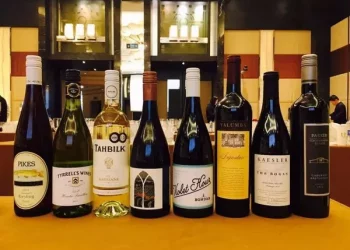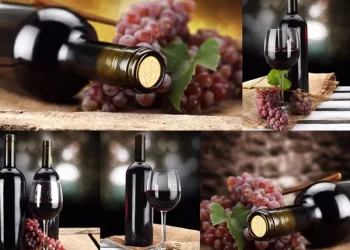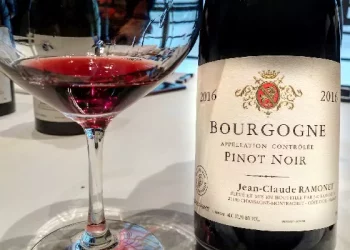We often taste wine in our daily life, so do you know how wine is classified?
Generally speaking, the three most common categories of wine are color, carbon dioxide pressure and sugar content.
If divided by color, wine can be divided into red wine, white wine and rose wine.
Red wine is made by the fermentation of red grape varieties with the skin. When young, it is mostly purple or ruby red. With the aging, the color gradually becomes lighter, and even develops into brown or brown.
The color of red wine is closely related to the grape variety and the time of soaking.
For example, wines made from thick-skinned varieties such as Cabernet Sauvignon and Syrah are darker, while those made from Pinot Noir and Nebbiolo are lighter.
In addition, the longer the wine is soaked in the skin, the more pigment is extracted, and the darker the wine will be.
White wine made from white grapes, usually also sometimes use red grape varieties to brewing, grapes after fermentation of the reentry after squeezing separated from the skin, very little can be extracted pigment, so into the wine show or lemon lemon green, commonly after aged gradually become deeper, eventually become amber or brown.
Wines made with Riesling, Sauvignon Blanc or Pinot Gris tend to be lighter in color.
In addition, the winemaking process can affect the color of white wines. In the case of Chardonnay, wine that has been aged in oak barrels will be darker than wine that has not been aged in oak.
Rose wines also get their color from the contact of the grape juice with the skin, but for a much shorter time than red wines, so they tend to be pink, salmon or orange.
As with red wines, the longer the skin is macerated, the darker the resulting wine will be.
According to the carbon dioxide pressure in the bottle, the Wine can be divided into Still Wine or Sparkling Wine.
Wines with a CO 2 pressure below 0.05Mpa at 20 ¡ã C are still wines, and most wines on the market today fall into this category.
Under the same conditions, if the carbon dioxide pressure in the bottle is greater than or equal to 0.05Mpa, it is a sparkling wine.
Champagne (France), Cava (Spain), Asti (Italy) and Sekt (Germany) are famous sparkling wines.
In the process of fermentation, the sugar of the grape fruit will be converted into alcohol by the action of yeast.
At the end of fermentation, the Residual Sugar in the wine is called residual sugar.
According to the amount of residual sugar, wines are generally classified into the following types: 1. Dry: the sugar content is less than or equal to 4g/L. Most common wines in the market belong to this type. 2.
Medium Dry: sugar content greater than 4, less than or equal to 12g/L3.
Medium Sweet: contains more than 12 sugar and less than or equal to 45g/L4.
The Sweet type:
With a sugar content of 45g/L or more for sparkling wines, in addition to the natural residual sugar at the end of fermentation,
Sparkling wines made using the Traditional, Transfer and Tank methods also have their sugar content adjusted by rehydration.
Sparkling wines can be divided into the following categories according to their sugar content: 1. Brut Nature: the sugar content is between 0-3g/L2.
Extra Brut: Sugar content between 0-6g/L3.
Extremely dry type (Brut) : Sugar content between 0-12g/L4. Extra-dry type (Extra-Sec) : sugar content between 12-17g/L5.
Dry type (Dry/Sec) : Sugar content between 17-32g/L6. Semi-dry type (Demi-Sec/Semi-Seco) : sugar content between 32-50g/L7.
Sweet (Doux/Dulce) : sugar content is greater than 50g/L at any time to see the latest market dynamics, please pay attention to.












































